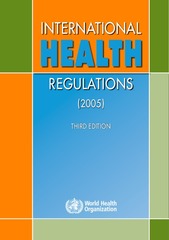IHR Monitoring and Evaluation Framework
IHR MEF
The IHR Monitoring and Evaluation Framework provides an overview of approaches to review implementation of country core public health capacities under the IHR (2005). The Framework ensures the mutual accountability of States Parties and the Secretariat for global public health security through transparent reporting and dialogue.
NOTE:
Intra-Action Review
In light of the protracted and unpredictable nature of the COVID-19 pandemic, countries may wish to conduct periodic reviews during the event so they can continue to reflect on the ongoing response and revise national and subnational response strategies and plans as needed to change the trajectory of the epidemic. WHO, having recognized this need, developed the Guidance for conducting a Country COVID-19 intra-action review (IAR) and accompanying tools. A Country COVID-19 Intra-Action Review (IAR) is a country-led facilitated process that allows stakeholders of the ongoing COVID-19 response to review the functional capacities of public health and emergency response systems at the national or subnational levels to identify best practices, gaps and lessons learned, and propose corrective measures and actions for immediate remediation or sustained improvement of the COVID-19 outbreak response. Although not an official component of the IHRMEF, intra-action reviews have been issued as one of the temporary recommendations to State Parties during the fourth meeting of the International Health Regulations (2005) Emergency Committee regarding the outbreak of coronavirus disease (COVID-19) convened by the WHO Director-General on 31 July 2020. Moving forward, there is also the opportunity to use intra-action reviews for other protracted public health events beyond COVID-19.

